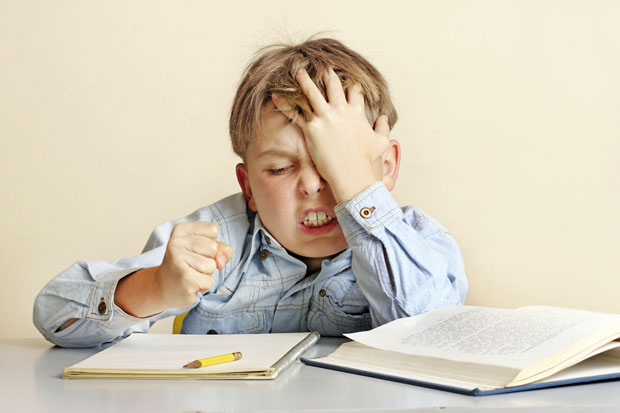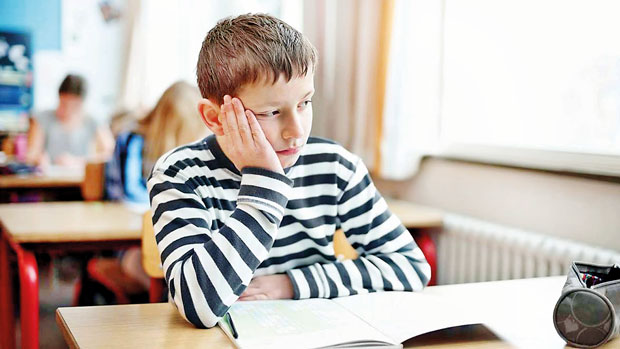
Do you find your kid highly active and doesn’t concentrate on anything you told or asked him or her to do? Does your kid’s teacher continue to complain that he or she isn’t engaging in school work properly and prefers to run here and there inside the class room, disturbing other kids as well?
Some parents might find this behavioral pattern completely normal whereas some would worry as to why their kids act in a way which is quite unusual, compared to others. In this article, we are going to discuss about the possible reasons behind this deficiency of attention and hyperactivity in children and how parents can seek help in order to make them function normal.
What is Attention Deficit Hyperactivity Disorder (ADHD)?
ADHD is one of the most common neurobehavioral disorders present
during childhood.
This is a collection of signs and symptoms that include; trouble in being attentive, easily distractable, sudden changes in thoughts, procrastinating, being disorganized, forgetfulness, fidgeting, excessive talking, impatience, interruption and difficulty in completing tasks.
ADHD consists of 3 subtypes known as inattentive ADHD, hyperactive-impulsive ADHD and the combined form which includes both other types. Out of these, inattentive ADHD is what was previously called ADD which doesn’t own hyperactivity like in other forms. As the name itself suggests the second form has both hyperactive and impulsive natures while the combined form has all three including hyperactivity, impulsivity and inattentive (trouble focusing) nature.
ADHD could be present in adults too. The condition usually lasts during childhood but can be diagnosed later in life.
It is really important to receive treatment as early as possible, because persisting signs can lead to social isolation, communication problems and poor academic and career skills.
ADHD is usually addressed with cognitive behavioral therapy including behavioral modification techniques, goal settings, practising strict bed time rules, providing rewards and gifts to appreciate their improvement, form rules and make them follow them and always try to praise so that they get used to consistency.
Is ADHD the same as Attention Deficit Disorder (ADD)?
No, they are not the same.
The term ADD is actually not used at present as a separate one, since it has been identified as a subtype of ADHD, now referred to as ‘ADHD, Predominantly Inattentive Type’(The last time it was known by the original name, ADD was in year 1994).
The main etiology of ADD is thought to be an imbalance between brain neurotransmitters which are involved in regulating the overall behavior of humans.
The main characteristic features of this type include inattention and impulsivity where as they don’t show hyperactivity at all, as
in ADHD.
In fact, these children are often found to be shy, reserved and calm, sitting in a corner of the classroom, spending time in their own dreamy worlds, while the teacher is teaching something. Their short attention span and easily distractable nature are prominent characteristics. Furthermore, their inability to maintain attention-which is a step by step process including focus- choose, sustain and resist other things may be misunderstood as some sort of a playfulness. But it is important to identify those signs before the condition worsens, since the problem lies not in the personality, but in the brain.
Impulsive- These children usually tend to do things quickly even before thinking since there is a difficulty in waiting or delaying gratification. This impulsivity will mostly end up in making them look so playful, speak out of turn, interrupt others and engage in
risk-taking behaviors.
For an example, they will suddenly get down from the vehicle and cross the road in a spur of a second, even before caretakers notice. They will also blurt out answers, before questions are completed and tend to interrupt the conversations of others since there is no control over their actions by thoughts.
As far as the other features of such children are concerned, they might show low frustration tolerance, temper outbursts, bossiness, manipulation, difficulty in following rules, disorganization, poor self-esteem, isolation, academic issues and inadequate self-application depending on the age and developmental stage.
This condition is often noted by school teachers who spend most of the hours with the child. Their parents will be able to confirm it by referring their children to a psychiatrist.
Treatment for ADD should start at home with a balanced diet, regular exercises, proper attention and care for the child. Physical activities and nutrients which are known to boost the brain’s Dopamine and Serotonin levels very quickly will result in an improvement from the poor maintenance of attention span and focus seen before.
Moreover, cognitive behavioral therapy, education techniques involving teachers and families and social skill training will help in making the child act in a less panicky manner.
Take home messages
- Both ADHD and ADD are neurobiological developmental disabilities which affect the part of the brain which regulates attention, behavior and focus.
- Even though the term ADD was used until 1994, it is no longer referred by this name, but identified as a subtype of ADHD which is known as the inattentive type. Unlike the condition of ADHD, ADD don’t present with hyperactivity.
- Both conditions are treated in a similar manner with the help of cognitive behavioral therapy.

 Do you find your kid highly active and doesn’t concentrate on anything you told or asked him or her to do? Does your kid’s teacher continue to complain that he or she isn’t engaging in school work properly and prefers to run here and there inside the class room, disturbing other kids as well?
Do you find your kid highly active and doesn’t concentrate on anything you told or asked him or her to do? Does your kid’s teacher continue to complain that he or she isn’t engaging in school work properly and prefers to run here and there inside the class room, disturbing other kids as well? 